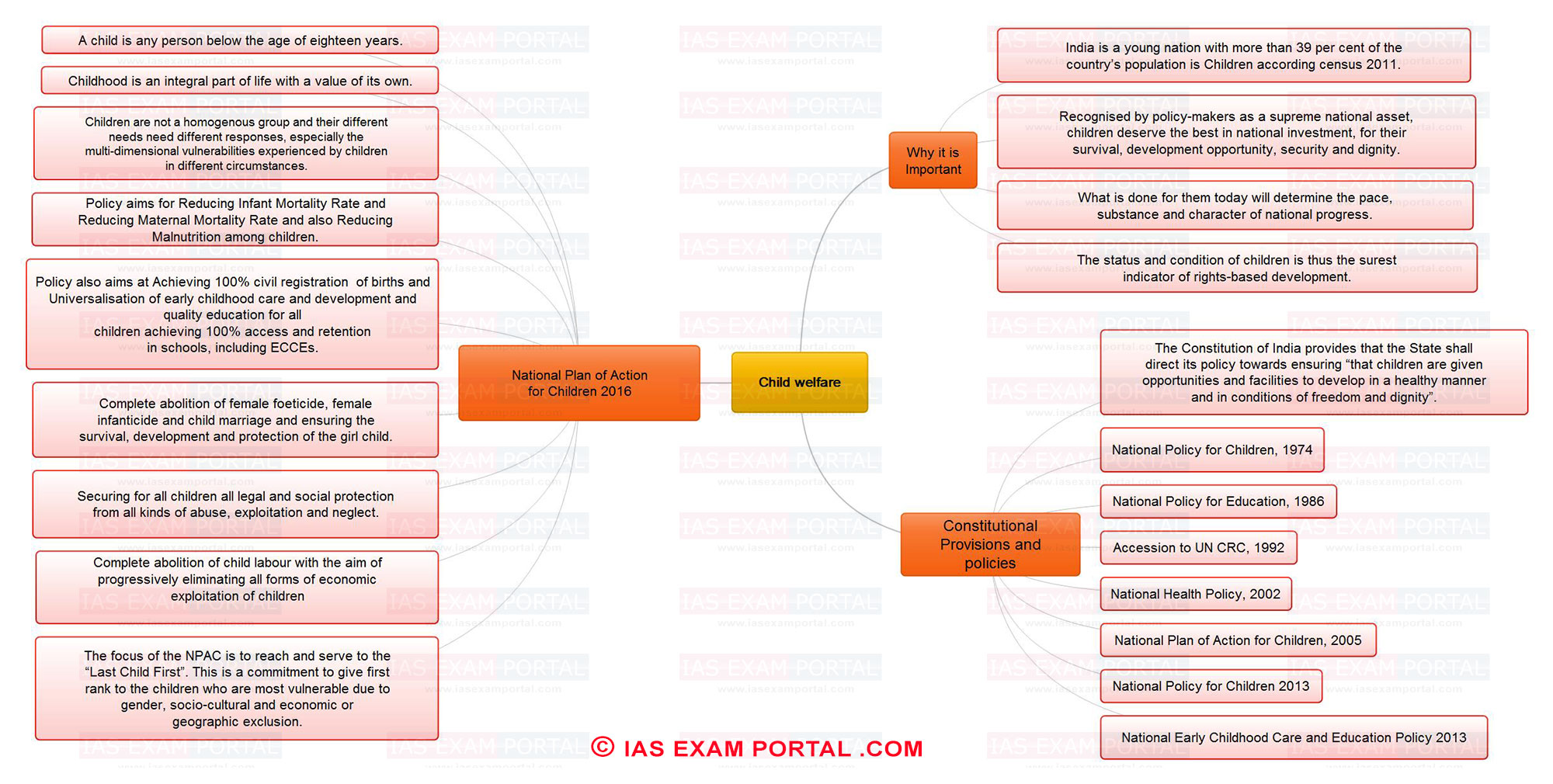(HOT) UPSC Current Affairs 2025 PDF
NEW! The Gist (NOV-2025) | E-BOOKS
Child Welfare: Mind Map for UPSC Exam
Child Welfare: Mind Map for UPSC Exam
Click Here to Download Full MAP in PDF
Study Material for IAS Prelims: GS Paper -1 + CSAT Paper-2
Online Crash Course for UPSC PRE Exam
Mind Map Important Topics:
Child Welfare
Why it is Important
- India is a young nation with more than 39 per cent of the country’s population is Children according census 2011.
- Recognised by policy-makers as a supreme national asset, children deserve the best in national investment, for their survival, development opportunity, security and dignity.
- What is done for them today will determine the pace, substance and character of national progress.
- The status and condition of children is thus the surest indicator of rights-based development.
Constitutional Provisions and policies
- National Policy for Children, 1974
- National Policy for Education, 1986
- Accession to UN CRC, 1992
- National Health Policy, 2002
- National Plan of Action for Children, 2005
- National Policy for Children 2013
- National Early Childhood Care and Education Policy 2013
National Plan of Action for Children 2016
- A child is any person below the age of eighteen years.
- Childhood is an integral part of life with a value of its own.
- Children are not a homogenous group and their different needs need different responses, especially the multi-dimensional vulnerabilities experienced by children in different circumstances.
- Policy aims for Reducing Infant Mortality Rate and Reducing Maternal Mortality Rate and also Reducing Malnutrition among children.
- Policy also aims at Achieving 100% civil registration of births and Universalisation of early childhood care and development and quality education for all children achieving 100% access and retention in schools, including ECCEs.
- Complete abolition of female foeticide, female infanticide and child marriage and ensuring the survival, development and protection of the girl child.
- Securing for all children all legal and social protection from all kinds of abuse, exploitation and neglect.
- Complete abolition of child labour with the aim of progressively eliminating all forms of economic exploitation of children
- The focus of the NPAC is to reach and serve to the “Last Child First”.
This is a commitment to give first rank to the children who are most
vulnerable due to gender, socio-cultural and economic or geographic
exclusion.

